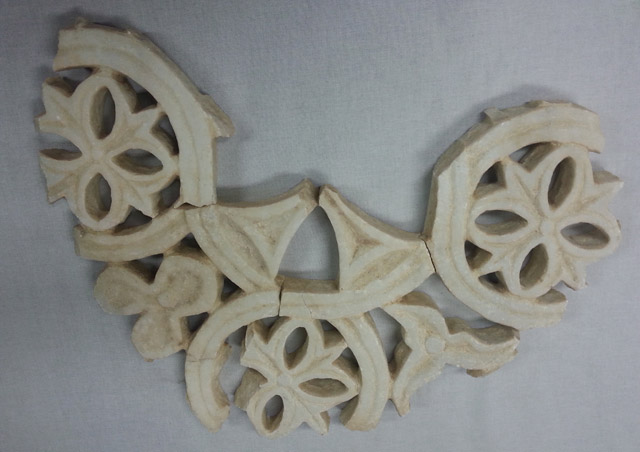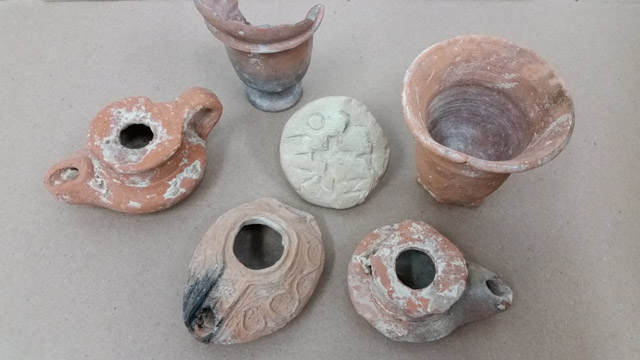(Communicated by the Israel Antiquities Authority)In the course of preparations for the construction of a new residential neighborhood in the town of Netivot in the Negev, the
Israel Antiquities Authority conducted a salvage excavation of the site. Youths from Netivot and Ashkelon were encouraged to volunteer in the dig, along with a group of future IDF recruits currently performing a year of community service in the area.
The excavation revealed the remains of a late Byzantine period village dating to the 6th and 7th centuries C.E., including a workshop, various buildings and two wine presses. Fragments of marble latticework in the form of a cross and flowers indicate the existence of a public building. Other findings include tools used in daily life, such as clay cups, oil candles and seals.
 Copyright: Saar Ganor, courtesy Israel Antiquities Authority
Copyright: Saar Ganor, courtesy Israel Antiquities Authority Copyright: Anat Rasiuk, courtesy Israel Antiquities Authority
Copyright: Anat Rasiuk, courtesy Israel Antiquities AuthorityIlan Peretz, who supervised the dig for the IAA, noted that one of the most impressive finds of the excavation is a sophisticated wine press that was used to commercially produce wine. He described the process: "First, the grapes were pressed. Then the juice was funneled through canals to a pit where the sediment settled. From there, the wine was piped into vats lined with stone and marble, where it would ferment until it was stored in clay bottles called 'Gaza jugs'" - hundreds of which have been found on the site.
On the basis of a cross etched into seashells adorning one of the vats of the wine press, the researchers determined that the site served the Christian community living there 1400-1500 years ago.